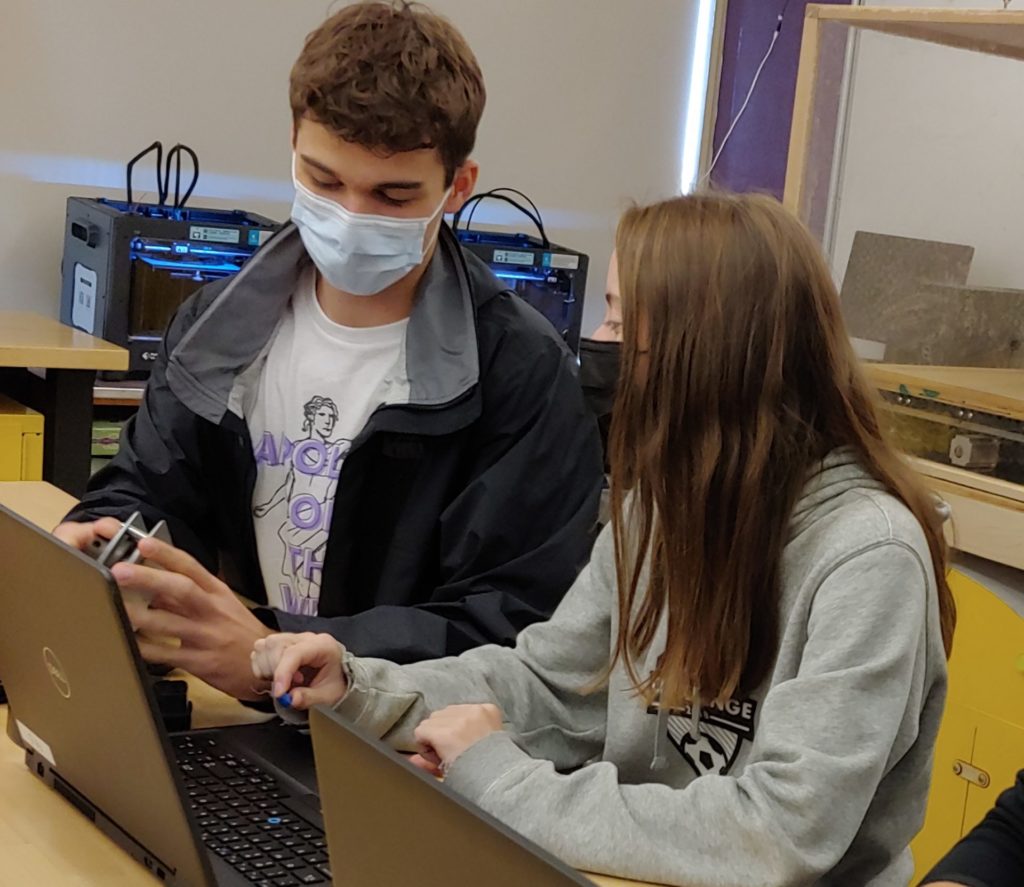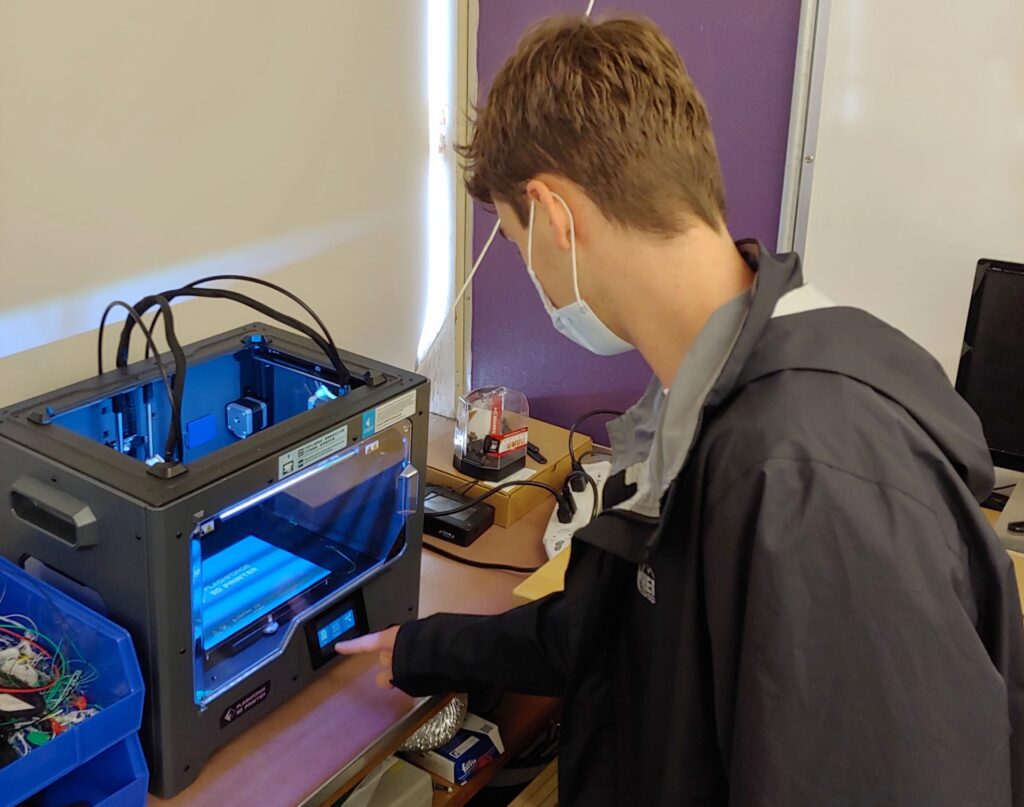
What do you get when you put educators, student engineers, and an HVAC system together? Up to $1 million in savings. This is what the school district in Beaverton, Oregon estimates they will save after engineering students at Sunset High School found a solution to an ongoing issue with their aging HVAC systems.
Volume modular assemblies within HVAC systems are devices that control airflow into places like classrooms—crucial equipment for the health of students and educators, especially during a pandemic. Systems across Beaverton were finding that the plastic parts that enable airflow, called “bushings,” were eroding and very expensive to replace.
When Cady Geer, a Career Technical Education (CTE) instructor at Sunset High School, learned about the school district’s dilemma, she trusted her students to do the job. “You can look at it as a problem that needs a solution, and use the skillset that you’ve learned in your engineering and computer science program to say, ‘You know what? I can do that’,” says Geer.
To answer this challenge, Geer’s CTE engineering students used Fusion 360 to design and 3D print bushings for the school district at 7 cents apiece, a clear bargain from the $1000/module price tag the district had been facing.

A Curriculum for Academia & Industry
To trace back how this feat was achieved, first a little about how Career Technical Education works. CTE programs require educators to either start out as a teacher and gain industry training or the reverse, having an industry background and gaining teacher training. In Geer’s case, she has both teaching and industry experience, making her a powerhouse in the world of high school education.
Geer’s interest in design and engineering started when she was 10 years old and her dad taught her AutoCAD. She’s been drawn to the process of making things ever since. When Geer arrived at Sunset High school in 2013 and noticed there was no engineering program in the curriculum, she made it a personal goal to establish one.
Geer and her coworker Jason Galbraith went after a CTE revitalization grant, securing a third of a million dollars to begin an engineering program at the school. And what they developed is no regular engineering program. Geer and her peers meticulously built their own curriculum, doing field research with local engineering firms to determine which skills would be most important for their graduating students.
Geer envisioned that these same firms might hire her students and reworked Sunset High’s curriculum to prepare students for future careers. Skills taught include 3D modeling, circuitry, mechatronics, project management, and team collaboration—using Autodesk Fusion 360, Autodesk Tinkercad, and Instructables. Students collaborate remotely and in-person on design challenges like the HVAC system project. Sunset High School currently offers 20 classes between the computer science and engineering programs.
Remote Learning and Collaboration
At Sunset High School, computer-aided design (CAD) is taught in three levels, each lasting a semester. Foundational principles in 2D modeling are covered first, then students move on to more complex 3D projects. Geer chose Fusion 360 for its easy-to-learn functionality and cloud-based collaboration. Most of her students join the engineering program with zero background in 2D or 3D modeling, but are able to learn Fusion 360 functionality quickly. This gives them more time to focus on the art of engineering, rather than the tedium of software learning.
The CAD-specific classes are taught by her coworker and husband Matt Geer. He has successfully implemented projects such as the “Be Useful” project, where students design and engineer a product that can be used in real life. Managing the complexities of pandemic learning, students have been able to work and collaborate remotely, with access to their design work and the classroom setting. A win-win for Sunset High School.
“The ability to import my entire classroom to access Fusion 360 is a game-changer. It used to take two weeks to get a whole class set up and sharing correctly. This year, that dwindled down to one day. The gift of time is phenomenal.” – Cady Geer, CTE instructor at Sunset High School

Cady Geer’s passion for improving educational experiences is palpable. She understands how deeply nuanced learning is for every individual and seeks to address the gap between conventional curricula and unconventional learning styles with experiential, hands-on activities. Her students continue to 3D print bushing parts for maintenance crews to install across the Beaverton school district. Reportedly, her students can engineer these parts faster than the crew can install them—a sign of true success for this bright group of blossoming engineers.
Are you a CTE teacher? If so, what kind of projects do your students work on? Let us know in the comments!